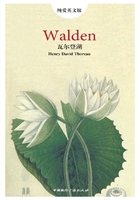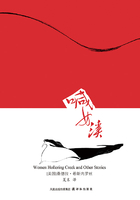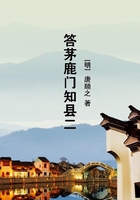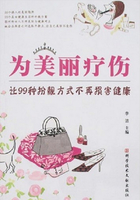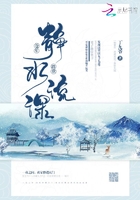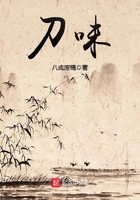What I felt most strongly in Tibet was the ease of death and the struggles of the living.
On a bulging piece of land in southwest China there is ahighway that people call "The Road To Heaven", which is the Sichuan-Tibet Highway that leads into the snowy regions of Tibet. The Sichuan-Tibet Highway was built in 1954, and was the longest plateau road that required the toughest engineering after the 1949 liberation. It played an important role in the consolida-tion of the defence of the southwest and the flourishing of Tibet's economy. It is 2,400 kilometers in total, beginning from the east in Chengdu in Sichuan, mounting fourteen mountains at four thousand meters above sea level and spanning twelve great lakes and rivers, ending in the west in the Tibetan city of Lhasa. All year round, along the route you may expect glaciers, floods, cave-ins, mudslides, avalanches and other attendant dangers of the highway without cease. Accidents often occur that block up the road, and fatal accidents to both vehicles and passengers are common.
There are at least two layers of meaning to the appellation "The Road To Heaven". The first layer concerns the height of the road above sea level, on average above three thousand meters; walking the road is like walking in the sky. The second layer of meaning is that to walk here is equivalent to walking an otherworldly road, one pregnant with disasters, in which you feel as if you are walking gradually into the Western Heaven.
I have walked "The Road To Heaven" many times. Each time I have walked it, my soul has been purified. My body and mind have been seemingly washed by the bright snow that blots out the sky and covers up the earth; it has rubbed away the impulses and filth of the outside world. The window of my soul seems to have been cleansed by the auspicious clouds, and I feel rich in life itself; my sincerity and purity match the azure skies of the plateau. As I perceive it, I belong to Tibet, and I belong to the Sichuan-Tibet Highway. Walking on the Highway, unmatched in danger and fascination, I can perceive the beating lifeline of Tibet. The whole of me seems to be thawed by that fierce sun on the stretch of land, and I become a mountain stone, a handful of ice, a trace-less footprint on a glacier, the cry of a condor. There, I understood deeply the hardships of the living and the ease of death. There, I twice witnessed my comrades falling in the snow without uttering a sound, falling in a pool of blood, sleeping the eternal sleep underneath the snowy plateau. There is no road, as such. What I can distinguish is a collection of eternal monuments, one after the other, erected by ordinary and great souls. Through these monuments, I can almost see the olive green silhouettes amid the icebergs and the snowy valleys; I can see the primary colors of the beating heart of the Sichuan-Tibet Highway.
Chapter 1 The Historical Background
Before liberation there was no highway and not a singlevehicle in all of the 1.2 million square kilometers of Tibetan territory. At that time the principal method of transporting goods was the mule or the laborer, as well as a small number of ox-hide boats. Many people and animals froze, or starved to death on the treacherous, ancient postal roads. On the road from Chengdu to Lhasa it was only possible to travel thirty or forty kilometers each day, and the journey there and back took at least a year. And during that year, it was only possible to travel with any effciency for perhaps five months; during the other seven months the postal roads were blocked up with rainfall, ice and snow.
The 1930 book A Summary of All There is to Know About Tibet describes the state of Tibetan transport conditions at that time:"All about are scattered stones, and the paths for people and beasts of burden are blocked up; the traveller's troubles are myriad, and the situation is, in fact, diffcult to adequately express.""Everyone under the sun trembles with fear when they arrive". Ten years after the Liberation, however, Tibet had gained a highway stretching 5,648 kilometers, and there were 1,330 vehicles.
At Xibaipo Mao Zedong Decides To Send Troops Into Tibet
In early February 1949 in an ordinary house in Xibaipo, Mao Zedong said to the Soviet envoy Mikoyan:"The problem of Tibet is not diffcult to resolve. We simply must not be too rash, for there are two issues here. The first is the diffculty of transport and army maneuvers, as well as maintaining supply lines, and the second is the question of minority nationality . . . "
It is clear that Mao Zedong had already set his sights on myste-rious Tibet, and had begun to contemplate the special and complex nature of the Tibetan question; furthermore, he had begun to consider the importance of diffculties in transport.
In October 1949 Mao Zedong said in a telegram to Deng Xiaoping:"The total number of troops in operation in Yunnan, Guizhou, Sichuan, Xikang and Tibet including the Second Field Army and the Eighteenth Detachment is 600,000." These were the crack troops of the People's Liberation Army, and demonstrate well the importance that Mao attached to the campaign to enter Tibet. After forty days, Mao sent a telegram to Peng Dehuai, a Commissar and the commanding offcer of the First Field Army of the PLA:"In terms of the management of the Tibet problem, please propose to discuss it at the northwest theatre meeting . . .We should finish the Tibetan matter in autumn or winter next year. With the situation as it is, the northwest theatre should take primary responsibility, and the southwest theatre should take secondary responsibility. Fighting in the northwest will conclude earlier than in the southwest, and the highway from Qinghai to Tibet is supposedly smooth and easy to travel on. The Panchen Lama and his flock are in Qinghai. We can only resolve the Tibet problem by dispatching troops. We must send troops to both the northwestern route and the southwestern route. So when the southwestern divi-sion has pacified Sichuan, Xikang then we may set about taking hold of Tibet . . . "
At that time there was no fighting in the northwest, and the southwest was involved in suppressing banditry. Twenty or so days later in mid-December 1949, Mao Zedong went to visit the Soviet Union, and on the way he wrote a letter to Liu Bocheng, the commander of the Second Field Army, Commissar Deng Xiaoping, and Commander of the Southwest Army, He Long. In the letter he stated:"In order to maintain our critical opportunity to liberate Tibet, strike out at imperialism, attack expansionist ambition and compel the Tibetan court to effect an internal transformation, our armies must strike sooner rather than later. Otherwise, a long delay will spell trouble for us."
On the thirtieth of December, Peng Dehuai sent a telegram to Mao and the Central Committee of the CCP, giving a detailed report of the climate and the roads from Qinghai and Xinjiang into Tibet. He raised the point that there were hardships in entering Tibet from Qinghai and Xinjiang that were diffcult to overcome. The troops entering from Kangding in Sichuan had split into following two roads. One road passed through Litang and Kemai, and the other passed through Ganmu and Changdu. Both of these roads made it easier to enter Tibet than those that led from Xinjiang and Qinghai.
Two days later, on the second of January 1950, Mao Zedong sent a telegram from Moscow to the Central Committee and Peng Dehuai, Deng Xiaoping, Liu Bocheng and He Long:"Although the population of Tibet is small, they occupy a prominent position on the international stage.""Since entering Tibet from Qinghai or Xinjiang is full of diffculties, the task of making a military entrance into the region and controlling it afterwards must fall to the Southwest Bureau.""If there are no insuperable problems, we must resolve to begin the advance into Tibet by mid-May of this year. We shall branch off into two routes from Kangding to push on to Xikang the Tibetan borderlands, one for motor vehicles and one for large carriers . . . "
At the same time, Mao Zedong emphasized:"We must both order the army to advance, and construct roads." Mao Zedong instructed that the Eighteenth Army would be selected from the Second Field Army to bear the task of entering Tibet, and that the head of the Eighteenth Army, Zhang Guohua, would lead the command team. He would plan and prepare for the complexities that arose from the campaign and the operations in Tibet itself.
In order to ensure supply lines for goods and food for the troops entering Tibet, the southwestern bureau of the southwestern divi-sion determined a policy of auxiliary support:"As long as you act according to reason, you may have what you need." They also decided to "not stint any price and to overcome all diffculties to speed up the construction of the highways". Ten days after Mao issued his directive about the advance on Tibet, the Second Field Army issued a directive that required each detachment to "deploy every effort in personnel, equipment, transport and every other way" to support the Eighteenth Army as it entered Tibet.
On the fifteenth of January during the meeting for deploying the Eighteenth Army to Tibet, Deng Xiaoping said:"The military issue of liberating Tibet requires a certain amount of military strength, but government is more important than military strength. In historical terms, military force has been used against Tibet many times and has not resolved the problem; those offensives that have been successful have relied on the melding of military power and government in order to resolve the issue. We must also solve the issue of the construction of the highways." Liu Bocheng empha-sized:"When we advance, we must devote a great deal of our strength to constructing roads. We can only gain a firm footing when we do this. If we construct Tibet well, we shall protect it."When Liu Bocheng heard the report from Chen Mingyi, the Chief of Staff of the Eighteenth Army, he said once more:"We must ensure a peaceful liberation of Tibet. The crux of the issue is transport. However we look at it, building roads and creating good transport links are more important than waging war. This means that liberating Tibet's governmental infrastructure is more impor-tant than military might, and construction and repair are more important than fighting."
On the eve of the Eighteenth Army's advance into Tibet, Liu Bocheng and Deng Xiaoping explained to the Central Committee their suggestion for "entering Tibet through multiple roads in Yunnan, Qinghai, Xinjiang and Sichuan". In this way they could capitalize on the effectiveness of a multi-pronged attack, and solve the geographical and supply problems. Mao Zedong readily agreed to this suggestion. The curtain was thus drawn back for the advance into Tibet.
The first move was made on the southwestern route. The south-western military division assembled three regiments of infantry from the Eighteenth Army, two brigades of technicians from the Engineer Corps and the Yagan Engineering Department. There were also several tens of thousands of laborers. On the twenty-fifth of March 1950 the army made a pledge and set out from Chengdu, to "build roads and advance". On the tenth of April, they rushed to complete the Chengdu-Ya'an Highway, and continued their advance. In mid-May the army stationed in Qinghai crossed from Xining to Tibet on the road built by more than eight thousand members of the First Army . . . In late May, an independent detachment of cavalry, more than two thousand camel riders and eighteen hundred laborers crossed from Xinjiang to Tianpuluo and built a road to Tibet.
At the beginning of August privates and three thousand mules from the Fourteenth Army who formed part of the Tibet units began to build a road from Yunnan to Tibet.
In October the cry of war resounded in Changdu. On the nine-teenth of October Changdu was liberated, and a new road was laid in the service of the peaceful liberation of Tibet. On the twenty-seventh of February 1951, the Dalai Lama sent a message to the Central Committee, saying that the Government of Tibet had sent Ngapoi Ngawang Jigme to the capital to hold negotiations on his behalf. On the twenty-third of May, the Central People's Govern-ment signed an agreement with the government of Tibet in newly liberated China's capital, Beijing, "An Agreement on Methods of Peacefully Liberating Tibet."
He Long Decides To March The Southern Route; Mao Has The Final Say
The Sichuan-Tibet Highway was the most geographically treach-erous of all the roads leading into Tibet at that time, involving the biggest number of people (there were 100,000 soldiers of over ten different nationalities including Tibetan and Han). The Sichuan-Tibet Highway was also the route that played the most pivotal role in the liberation of Tibet. There were four reasons why constructing the Sichuan-Tibet Highway was very arduous. Firstly, there were no reliable geological data on the terrain, and the route was hard to determine. Secondly, the mountains were tall and the roads were dangerous; along the route were fourteen mountains between 3,000 and 5,000 meters above sea level. The route also crossed numerous ravines and rapids, and the air on the moun-taintops was thin. Snow fell all year round, and the temperature dropped below minus thirty at night. Thirdly, the route had to pass through primeval forests, grasslands and swamp areas. The supply lines were long and delivering provisions was diffcult. Fourthly, the road had to pass over Cenozoic Era geological areas uncharted in the history of road building. Natural disasters like quicksand, glaciers, mud and rock flows, and avalanches were more frequent. In order to select a suitable route to Lhasa ten reconnaissance teams were appointed one after the other from the beginning of the road-building program. Their mission was to enter the ridges and towering mountains, the icy mountain peaks and the snowy valleys. One team among them covered over 6,000 kilometers and climbed more than 200 mountains. This took them a year, after which they returned to their detachment. Because of the treachery of the high mountain roads and the dense forests they lost contact with their commander for several months. Their comrades thought that they had perhaps died. But when they reappeared, bearded, in the camp with their clothes in rags, their hair long and dishev-eled, and looking sallow and emaciated, nobody there recognized them. After a long period of confusion those in the camp under-stood who they were, and rushed to attend to them with tears of joy. Rang Mingde, Commissar of the Road Construction Head-quarters, personally organized a team of ten technicians and a transmitter-receiver to scout out the southern route once more. They amassed a large amount of information.
After a great deal of reconnaissance, the engineers and techni-cians posed two routes towards Lhasa. The first was the northern route that led from Changdu through Dingging, Suoxian County and Heihe to Lhasa. The terrain here was relatively flat, but it was comparatively far above sea level, and in the winter the block-ages of ice and snow were severe. The other was the southern route that led from Changdu through Bangda, Bomi and Linzhi to Lhasa. This route was comparatively lower in altitude, was more forested, and the climate was better. However, the geographical and geological conditions were more complicated. Glaciers, mud and rockslides and landslides were more frequent.
Which route was best, the southern route or the northern route? The Road Construction Headquarters could not make up its mind. In early December 1953 Chen Mingyi, the Commander of the Road Construction Headquarters, and the Commissar, Rang Mingde took a group of technicians to Chongqing to give a report to He Long and Liu Bocheng. They opened the map and outlined in detail the advantages and disadvantages of the northern and southern routes. He Long listened attentively, and fixed his eyes on the map in front of him as sternly and deeply as he had during the war. He remained lost in thought for a long time, and then bran-dished the red pencil in his hand and drew a line decisively across the southern route forcefully, saying:"We shall take the southern route!"
Afterwards He Long summarized his reasoning. Firstly the climate along the southern route was more temperate and the altitude was lower. In the Tibetan plateau this was a crucial advantage. Secondly, the southern route passed through forests, grasslands, lakes and areas of fertile production. They would not only have wood for the construction of roads, but also stone and other building materials. Furthermore there were highland barley, cattle, fruit, fuel and other goods and materials. More importantly, however, was the presence of abundant resources and territory of great economic value that could be exploited and used in creating a new Tibet in the future. This route would better benefit the people of Tibet in the long term.
Liu Bocheng said:"I agree with Old Comrade He. Deliver your report to the Central Committee as quickly as you can! I think they will certainly approve this plan!"
The next day, Rang Mingde's flight arrived in Beijing. He first went to the Transport Unit to give a report to Wang Shoudao, and then he went with Wang to the home of Peng Dehuai. When he heard the report, Peng said joyfully, "I give my support to taking the southern route!" He immediately phoned Deng Xiaoping, and Deng also indicated his assent.
On Lunar New Year's Day, Rang Mingde, Peng Dehuai and Wang Shoudao went to the Huairen Hall in Zhongnanhai to give a report to Mao Zedong during the Spring Festival gathering organ-ised by the Central Committee. Mao listened to them and read the plan to advance by the southern route, and then solemnly asked Peng Dehuai:"What is the basis for this plan?"
Peng Dehuai said:"Comrade Rang Mingde personally led a reconnaissance and investigation team to the area."
Mao burst out laughing and said to Rang Mingde: "How wonderful-you tasted the pear for yourself!"
Then Mao wrote five large characters on the report:"I agree with this new plan." Then he said, "Do it according to your own ideas!"Thus one of the world's famous roads came into being, and was confirmed on the first morning in the lunar New Year of 1953.
On the Eve of Mao Zedong's Sixty-First Birthday, The People's Liberation Army Completes the Road to Lhasa
The twenty-fifth of December 1954 was a day to commemo-rate. That day the Sichuan-Tibet Highway and the Qinghai-Tibet Highway opened to traffc. Great gatherings were held concur-rently in Lhasa, in Ya'an in Sichuan, and in Xining in Qinghai, to celebrate the opening of the two roads. That day, the sky in the holy city of Lhasa was exceptionally bright. Every Tibetan household hung out red flags; colored bunting waved and fluttered from both sides of the streets. In front of the Potala Palace over 30,000 gath-ered, wearing rich traditional dress. Those in charge of constructing the two roads, Chen Mingyi, Rang Mingde and Mu Shengzhong, greeted the offcers and men of the road building corps with great enthusiasm, and paid their compliments to each other. Commander Zhang Guohua, accompanied by the representative offcial of the local Tibetan government, walked beneath the multicolored gate and cut the red silk ribbon. He sat majestically atop the colored vehicle with the enormous portrait of Mao Zedong, leading a long, dragon-like cavalcade. They drove up slowly to the front of the Potala Palace. The military band and the drummers from the three great Lhasa temples began to play, and the din of applause, cheers and firecrackers merged into one. People cried out:
"Long Live the Chinese Communist Party!"
"Long Live Chairman Mao!"
The Tibetan crowd fought among themselves to hang spot-less hadas[1] around the portrait of Mao Zedong, and place them on the colored vehicle that rolled through their midst. That day the Xinhua News Agency ran the meetings held in Lhasa, Ya'an, Xining and the celebrations of the opening of the Qinghai-Tibet and Sichuan-Tibet Highways as its theme, and proclaimed the news to the world. The Dalai Lama sent a congratulatory telegram from Beijing to the road-building army. The telegram said:"This glorious and unique feat is not only unparalleled in history, but also an indication that the radiance of Chairman Mao has trium-phantly spread over the whole of Tibet. This feat will play a large part in developing and expanding the ties that bind the Tibetans and the Han, and has created ever more favorable conditions for the development of the Tibetan economy and the enterprise of cultural construction. I send my solemn and lofty respect, as well as my heartfelt thanks, to the great leader Chairman Mao, and offer my congratulations and unending gratitude."
That day, the staff in Zhongnanhai were preparing for Mao Zedong's sixty-first birthday celebrations. The sun shone brightly. When Mao heard the news that the two roads into Tibet had been successfully opened he was sitting in a courtyard on a rattan chair reading a newspaper. He was overjoyed, and rose to his feet, went into his study, and before the large desk that would feature prominently in documentary films, wrote a line of char-acters:"Congratulations on the opening of the Qinghai-Tibet and Kang-Tibet Highways. We must consolidate the solidarity of every nationality and firmly build up the motherland!"
Chapter 2 Fragments of Memory
AfPtLer the sichuan-tibet Highway was opened to traffc theA quickly put down the 1959 Tibetan rebellion. The road played a large role in social cohesion, economic development and stability in Tibet. However, in the fifty years since then the unique geological and climatic conditions have produced continuous natural disasters on the Sichuan-Tibet Highway. There are about ten such highway disasters that have gone down in history: In 1953 there was a large mudslide in the ancient town of Bingchuan, which destroyed several dozen li of forests. Bridges collapsed and roads were damaged out of service. In the twelfth month of the lunar year 1967, there was an enormous landslide 2000 cubic meters wide. It destroyed the road foundations, blocked up the course of the river, and made the road impassable for two years. In the summer of 1988 a glacier on the Midui Lake broke free, and ice and snow, rocks and mudslides were swept along by the screaming wind. It swept downwards and destroyed over 200 kilo-meters of road until it reached the natural barrier of the Dipalong. At first the Sichuan-Tibet Highway was paralysed, but when the glacier struck it was drowned and completely incapacitated, and service was interrupted for two years. In 1989, there was a huge mudslide in the Gama Valley at the foot of Yela Mountain. It swept away and smashed up six bridges, and destroyed twenty kilometers of road foundation. On the twenty-seventh of September 1990, this section of road was savaged by fierce rain. There were land-slides in a hundred places, which destroyed twenty-five bridges and culverts.
The Sichuan-Tibet Highway was paralysed, and traffc could only pass through it for six months each year. In order to try and restore this National Defence Highway and make it open to traffc once again, the government tried repeatedly over a course of several decades to carry out repairs on some of the most impor-tant sections. However, their efforts were in vain. By 1990 the government attempted large-scale repair work on the Sichuan-Tibet Highway. Their initial investment was a billion yuan, which only increased. When the armed police received their orders from above, a detachment of troops left the Qinghai-Tibet Highway reconstruction site for the Sichuan-Tibet Highway. They began to recover the Sichuan-Tibet Highway and to restore the most diff-cult sections of the road.
From then on those soldiers dressed in olive green waged a unique, incremental struggle on the Sichuan-Tibet Highway against blockages, avalanches, and mudslides. They left many stories and the indelible mark of their blood and loyalty on the highway. There are too many stories of the Sichuan-Tibet Highway. Even when ten or so years have passed, fragments of memory remain imprinted on my mind. These fragments are normally softly carved onto my subconscious, and leave an invisible but painful blood scar.
A Bamboo Pole and Three Graves
I often think of that bamboo pole. The man who owned it was a soldier, and his name was Pan Xuelong. He retired some ten years ago. The first time I ever saw Pan Xuelong in Tibet was when he had just entered the army. His bright, young eyes left a deep impression on me. The second time I saw him was three years later. Regretfully, I no longer saw the brightness in his eyes.

